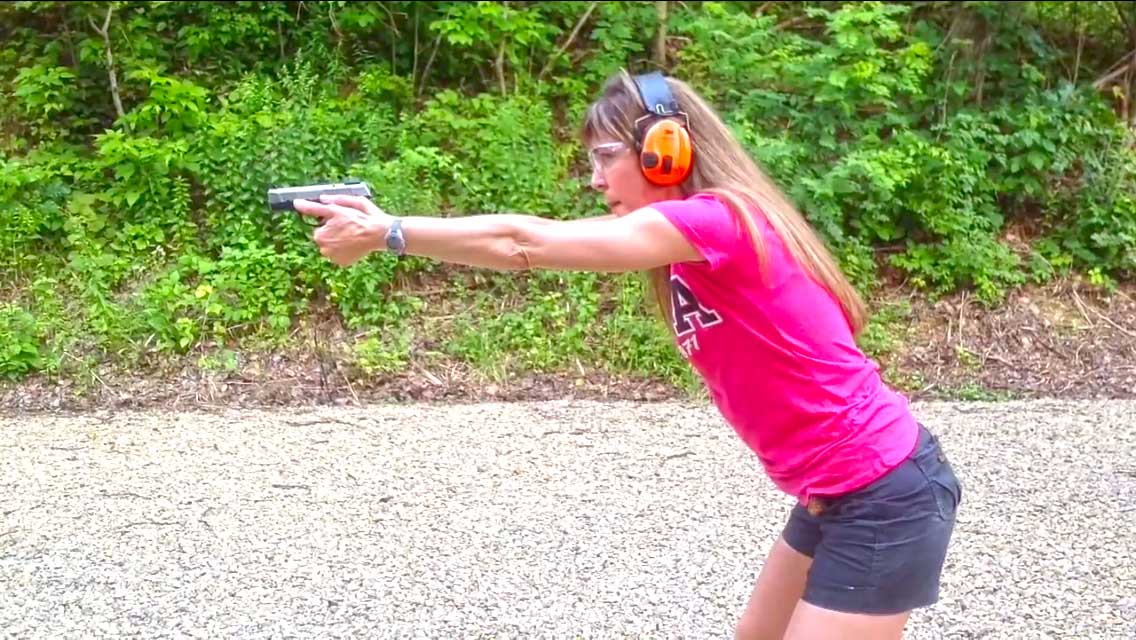Over the years people’s opinions on which is the “best practice” handgun stance for defensive shooting has changed. There are three common stances that people use today: the Isosceles, the Weaver, and the Chapman (which is the modified Weaver) and while many argue that one is better than the other, in reality, “best practice” is the one that suits you and you find most comfortable. Whichever stance you choose, it’s important that you have a proper defensive shooting stance and grip as this gives you a strong foundation for all the other shooting fundamentals.
The three stances, the Isosceles, the Weaver, and the Chapman tend to be the most natural stances. They are the most well known and usually the easiest to understand. They each have their own set of benefits and with such a wide range of situations a shooter could find themselves in, it’s difficult to say which one would be best.
The Weaver Stance
The Weaver stance is probably the most familiar one as it’s the one most often seen in movies. The stance was invented by Los Angeles County Deputy Sheriff Jack Weaver for combat-style matches and is an aggressive, “boxer-type” stance that offers an excellent and accurate platform for delivering projectiles at the target while minimizing the upper body profile. The gun is held by both hands and the strong-side arm is not fully extended and on that arm, the elbow should be unlocked and angled slightly outward. The support hand then pulls into the shooter while the strong hand pushes outward and the support-side shoulder leans into the gun. This creates a very rigid grip on the gun.
The Isosceles Stance
The Isosceles stance gets his name from the fact that if you look at it from above the arms and chest of the shooter create an isosceles triangle. It is a two-handed technique in which the dominant hand holds the handgun and the other hand wraps around it, both arms are held out straight and the elbows are locked. The Isosceles Stance is a simple stance and is natural to perform under stress. It also provides an easier range of motion to accommodate wider angles and allows the shooter to adopt a natural defensive position.
Chapman Stance
The Chapman Stance uses the same aggressive foot position as the Weaver, however, it is a more relaxed stance and the major difference is the strong-side arm is fully extended. The Chapman Stance is slower to assume than the Weaver, but it does require less upper-body strength to execute, and many experts consider the Chapman to be the most accurate two-handed stance available to a skilled shooter.
Whatever you feel is the most natural and the one you practice most is the one that is “best practice” for you because even if you intend to use another stance, you will naturally revert to the one you’re most comfortable in that situation. Having an excellent knowledge of different stances will put you in a better situation to defend yourself in a defensive shooting situation.
- Training,
- 2854




